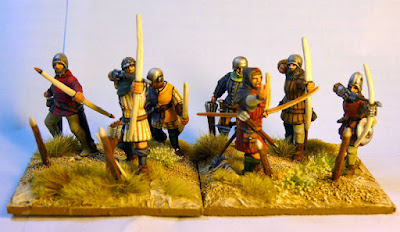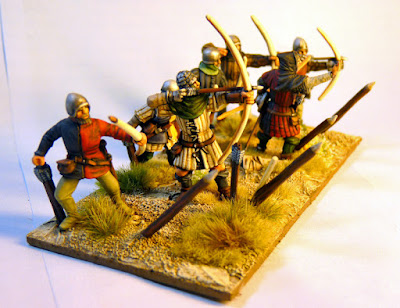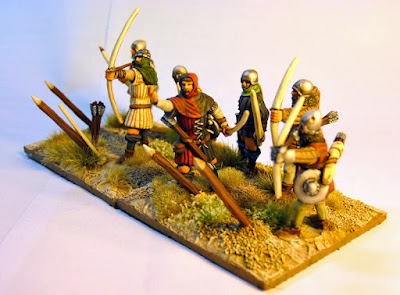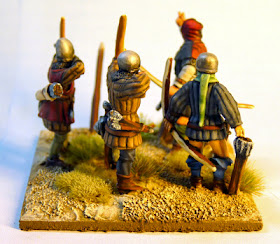The subject of basing mini's is of course a very subjective thing. everyone has their own preferences and style.
As I'm working on re-basing my HYW Verneuil English whilst painting up more of the lovely
Perry Miniatures HYW English Plastics, I decided to put together a small series of articles that some may find helpful. I've juxtaposed some of the Perry Miniatures conversions with some of the beautifully crafted
Claymore Castings as 'period' wise they are not that far apart and armour was a very valuable commodity and often passed down from generation to generation even as late as the latter stages of the HYW.
The first stage is to glue the miniatures to the bases. This sounds pretty straight forward but over the years I've found myself changing the glue that I use several times. I started with two part epoxy, moved onto superglue (of varying thickness) and have finally settled upon good old PVA! Why? Well, it seems almost inevitable that one is going to re-base and the miniatures is much easier to pry off the base if one uses PVA than any of the other options!
The second part is to add spackling/Pollyfiller etc. This should be applied very carefully as it can stick to the miniatures. If this does happen it's easily remedied by getting and old wet brush and simply wiping away the filler
when it is wet and before it has dried. I've given my filler a fairly thick wash of Vallejo Matt Black to aid the illustration but also to act as a sealant.
So, I've got some very fine Tallus, easily bought from a model shop, and this is applied by adding neat PVA to the desired areas and then sprinkling on the Tallus. Easy.
The next stage is to add some larger grains of sand. i tend to leave areas of the spackling/filler completely bare as this dry brushes up very realistically and adds more variation to the base. so, it's on with the neat PVA and on with the sand.
That's about it. The next article will be looking at painting the bases and the following one will be looking at adding static grass and grass tufts.
Bye for now.























































